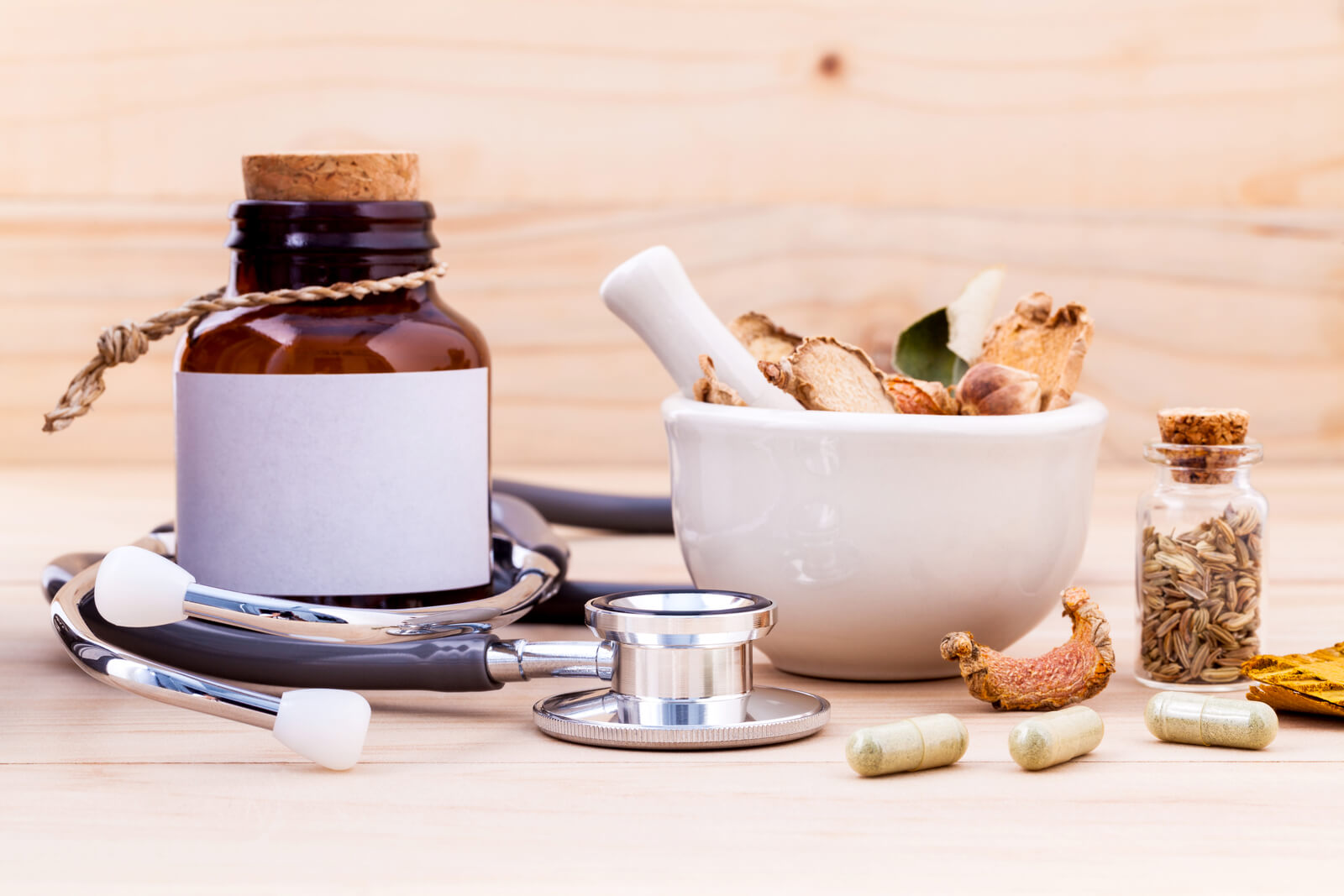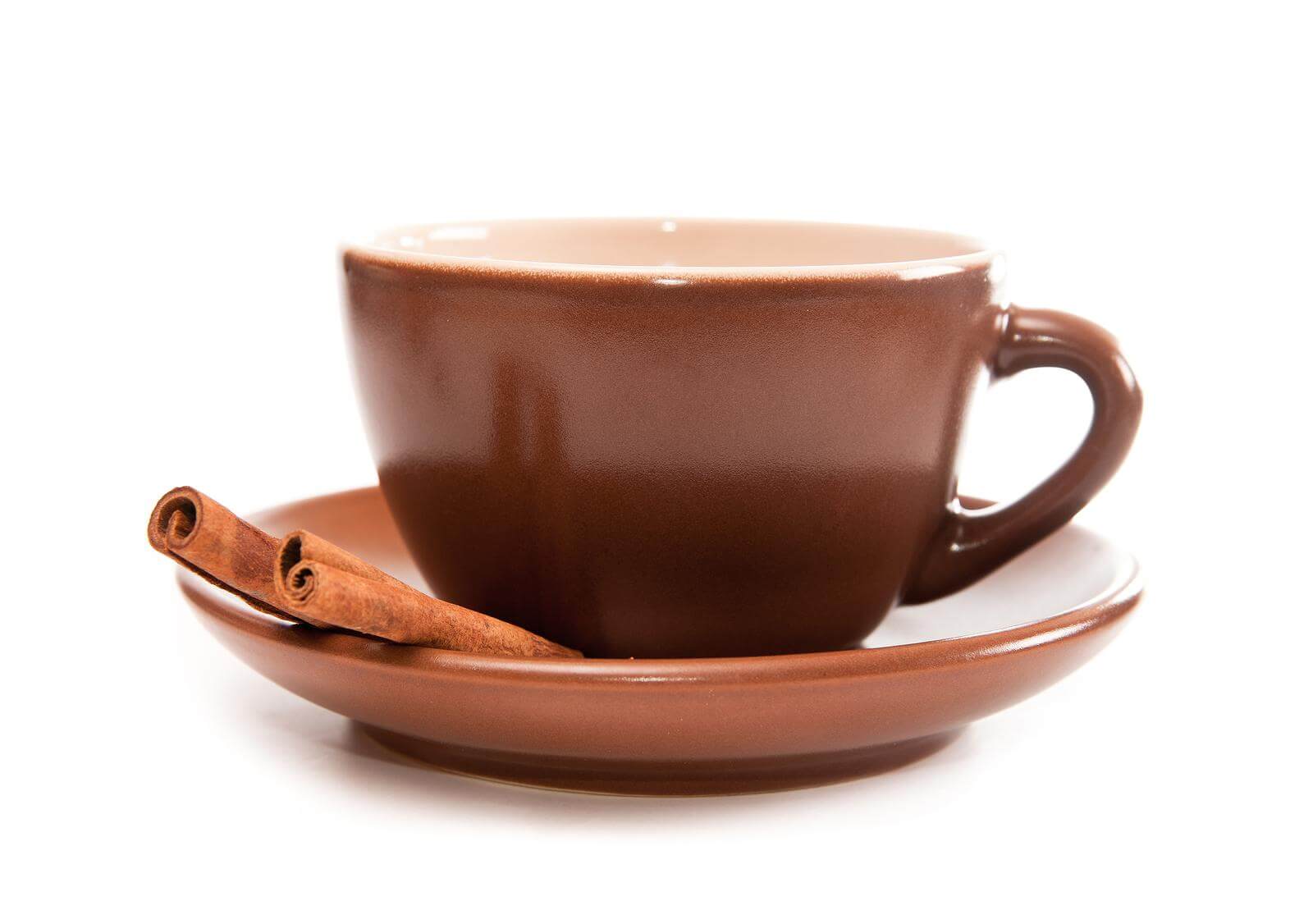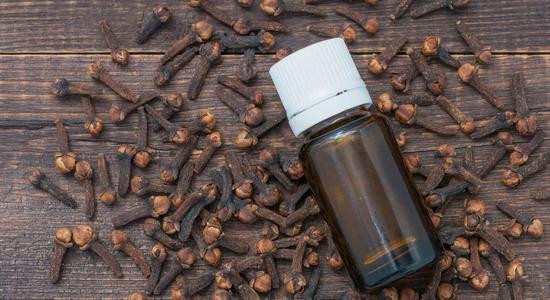See all "Herbs" Section Topics

The consumption of cinnamon, and its use for a variety of other purposes, has a long history. Even Moses used cinnamon in his holy oil in the Bible’s Old Testament. The spice trade of historic Europe thrived on cinnamon as one of its primary luxury goods. Cinnamon is now grown in many parts of the world, and has been used medicinally for some time. With the advent of modern technology; scientists have also verified that cinnamon is a viable treatment for some bacterial and fungal conditions. Getting rid of yeast infections is one medicinal use cinnamon shows excellent efficacy in. You likely have some cinnamon bark powder already in your house; you can add it to your yeast infection treatment to bolster the power of your current therapy!
Cinnamon Bark Powder for Candida

According to a study, published in BMC Complementary and Alternative Medicine [2013, 13:275], essential oil derived from Cinnamon zeylanicum bark contains primarily trans-cinnamaldehyde, eugenol, and linalool. These three chemicals comprise 82.5% of the total composition of the essential oil. Trans-cinnamaldehyde is the constituent that comprises the bulk of the cinnamon bark oil, accounting for approximately 49.9–62.8% of the total amount of bark oil.
The study provides a chart showing the results of many tests of cinnamon against various fungal and bacterial pathogens. Included in the chart are many different species of Candida. Even multidrug resistant (MDR) Candida albicans was susceptible to cinnamon. Check out the results chart here. As you can see in the chart, many separate studies found cinnamon was a powerful anti-Candida substance. So this study’s chart thoroughly shows that cinnamon powder can be used to safely inhibit the development of Candida; as demonstrated by a host of researchers.
One of the studies that the aforementioned and linked result chart talks about, was a 2012 study published in the International Journal of Pharmaceutical Sciences Review [2012, 16:125–129]. The study took bark from Cassia cinnamon (Cinnamomum cassia) and the more common “true cinnamon tree” bark (Cinnamomum zeylanicum) and tested these two bark’s capabilities to inhibit Candida albicans. The powdered bark of these two cinnamon species were diluted to small concentrations of their weight in the total solution. The study found that a solution containing just 4% cinnamon powder from both types of cinnamon radically inhibited Candida albicans development. True cinnamon (Cinnamomum zeylanicum; the kind you find labeled as just “powdered cinnamon” in the grocery store) worked better than Cassia cinnamon at inhibiting Candida albicans.
Another study, focused on fluconazole resistant and susceptible strains of Candida. The study was published in The American Journal of Chinese Medicine [Volume 24, Issue 02, 1996]. The bark of Cinnamomum zeylanicum was used in the study. Cinnamon bark had a powerful ability to stop all the strains of Candida used in the study. The minimum inhibitory concentrations (MICs) of the bark ranged from less than .05 to 30 mg/ml. Trans-cinnamaldehyde, the primary active chemical constituent of cinnamon bark, exhibited MICs of .03 to .5 mg/ml. The study also found that some people with the human immunodeficiency virus (HIV), who took a commercial cinnamon product orally for one week, saw improvements in their oral thrush.
A 1/2 Day & Yeast is Gone!
Linda Allen suffered from yeast infections for years. Through researching natural medicine & Candida, she found an efficacious solution!
Linda is one expert you want on your side! Let her show you how to get rid of a superficial yeast infection in just 12 hours; AND, keep it gone!
A 60-day, 100% money back guarantee is provided.
Visit Official Site!How to Use Cinnamon for Candida

To help get rid of Candida in your digestive system, you can drink a tea made from cinnamon bark. Simply take a few cinnamon sticks and boil them in water for about half an hour. After you are done boiling the cinnamon sticks, take them off the heat and let them steep while they cool. When the water is cool enough to drink, remove the sticks, and drink the cinnamon tea! You can also simply use cinnamon bark powder and strain out the powder before you drink it; if you don’t have cinnamon sticks that is.
You can also use cinnamon in the vagina, but first you should add it to honey. Add a significant amount of cinnamon bark powder to honey, but not so much that the honey loses its viscosity. You can also add a few drops of Candicidal essential oil to the cinnamon honey mix for an even better cure. Before you go to bed, get a tampon and let it soak in the cinnamon honey mixture. When the tampon is fully soaked with the mixture, insert it into your vagina and then go to bed. Let the tampon remain in your vagina while you sleep at night and remove it when you wake up the next day. You may need to do this for more than one day.
Eliminate Bacterial Vaginosis & Vaginal Odor
Jennifer O’Brien is one prominent expert on BV that knows how to get rid of vaginal odor. BV is a common infection that you don’t have to put up with.
Jennifer will show you how to naturally eliminate vaginal odor in just 3 days.
A 60-day, 100% money back guarantee is provided.
Visit Official Site!Cinnamon Infused Oil
You can also make a cinnamon infused oil with fresh cinnamon sticks. Simply buy a package of cinnamon sticks and some carrier oil to infuse. Put the cinnamon sticks in a pan and cover them with oil. Turn your stove’s burner on medium-low heat and let it heat for about an hour. After the mixture is done heating, take it off the stove and allow it to cool. You can also then put the mixture into a jar and let it further infuse for a day in a cool, dry place. If you desire a stronger infusion, take the old cinnamon sticks out after heating the oil and add fresh cinnamon sticks. Heat the oil mixture for about another hour, as you did the first mixture. Repeat this process until you are satisfied with the strength of your infusion.
Once you have your cinnamon infused oil, you can apply it topically to the area that is infected with yeast. Try adding a few drops of other Candicidal essential oils to the infused oil for an even better treatment!
Clair Goodall: Author & Nature Lover
Clair Goodall is a bee-obsessed natural medicine convert from Minnesota. She is one expert you might want to know more about!
Clair will help you protect you and your family from toxic products and chemicals and help you discover solutions from nature.
Also, Clair’s book is backed by a 60-day, 100% money back guarantee
Visit Official Site!Cinnamon Essential Oil

Cinnamon essential oil can also be used instead of cinnamon bark powder. You can add cinnamon essential oil to water and drink it as a tea, or put it in honey or another carrier oil and apply it directly to the vagina or infected area. For more information on the essential oil, check out Cinnamon Essential Oil for Yeast Infection.
Home Yeast Infection Remedy
Cinnamon is one herb recommended in Candida Hub’s homemade yeast infection remedy. You can always add more herbs or essential oils to this treatment to increase its potency. If you have the time, read up on the various herbs and essential oils that you can use to treat Candida outbreaks. Natural medicines can cut through Candida biofilm (biofilm makes Candida over 1000 times more resistant to conventional drugs) and kill yeast as well or better than prescription antifungals. As Dr. James Duke recommended, in his book The Green Pharmacy, mixing herbal remedies together is a great way to formulate a superior remedy for yeast infections.
A Natural, 12 Hour Yeast Infection Cure

According to a research paper published in Clinical Microbiology Reviews [12.1 (1999): 80-96], Candida species are quite ubiquitous organisms. Candida are most frequently present in the mouth; and, live in 31% to 55% of healthy people. The species that causes approximately 70% to 80% of all Candida infections is C. albicans.
The Chinese Journal of Obstetrics and Gynecology [2011 Jul;46(7):496] reports there appears to be a correlation between intestinal Candida infections and vaginal yeast infections. And, this provides a clue, as to why yeast infections in general, can reoccur.
This study states, in 148 cases of vaginal candida infections, 33.1% of the women were infected in both the intestines and vaginal area. The recurrence rate of yeast infections, in women with simultaneous intestinal infection, was significantly higher than for women who did not have an intestinal infection. This study concluded that vaginal yeast infections are highly associated with simultaneous intestinal Candida infection.
As research appears to indicate, systemic Candida infections can and do happen. A more systemic Candida infection may primarily get a foothold in the intestines; and cause a wide array of problems. If your yeast infections keep happening, a systemic Candida problem may be why.
One woman who suffered from a systemic Candida infection, for about 12 years, was Linda Allen. The systemic Candida infection that attacked Linda caused a wide range of health problems in addition to yeast infections. Some of these problems, Linda describes in her own words in the following quote:
To be honest, it was hard to pinpoint exactly what was wrong: I wasn’t really sick, but I wasn’t really well either. I had listlessness, fatigue, brain fog, stomach ailments, unexplained rashes, skin infections, and so on. It seemed like every day brought a new challenge.
My energy was sapped and I felt exhausted, which affected my grades and put a big dent in my social life.
Linda Allen’s symptoms included an embarrassing vaginal discharge, severe itching, and burning sensations. Her infections were difficult to deal with, and Linda’s health problems cost her financially as well. Linda states these infections of Candida can become excruciating when they happen as frequently as a menstrual period.
Yet, Linda spent a great deal of time in research; and even questioned health professionals who were kind enough to share some time with her. Linda even tried an array of purported "cures." Although it took a while, eventually, Linda put together a natural treatment plan she hoped would solve her Candida situation.
After spending about a year refining her new approach, Linda tried her system on herself. It worked amazingly well. Linda even returned to a few medical doctors to get tested for the presence of infections. These tests revealed all indicators of infection had vanished! Linda was indeed well again, after such a long, difficult journey.
Linda has since published a book detailing how to copy her success. She also includes a 12 hour yeast infection cure that can get rid of a superficial (such as a genital yeast infection or oral thrush) yeast infection in about 12 hours.
Linda’s publisher protects those who get her book with a 60 day, 100% money back guarantee. Linda’s publisher, a subsidiary of the United States based firm Keynetics Incorporated, is a reputable digital retailer that has been around for a long time. They have great customer service, and make getting a full refund on Linda’s book quick and easy. If you’re not satisfied, you can quickly get all your money back.
If you would like to learn more about Linda’s journey to freedom from Candida, see reviews of others who tried her natural system, or find out more about her efficacious book; you can find more information at Linda Allen’s website.
Author: Mr. Nicholas Gross

Nick Gross is a natural medicine enthusiast who has been researching and writing about natural medicine since 2008. Nick is primarily a web developer but also researches and authors written and video content about natural health. Nick has a bachelor’s degree in Management Information Systems from the University of Northern Iowa.
Disclaimer
The information on this website is not a prescription for anyone. This information is for informational or educational purposes only, and is not a substitute for professional medical advice or consultations with healthcare professionals.
Affiliate Disclosure
Some of the links provided on this website are affiliate links. When a purchase is made through these links, Candida Hub earns money from commission. This helps to keep the website up and helpful to people for free. Thank you for any support!
Stay Up to Date
If you enjoyed this article, consider following / liking our Facebook page. This page is primarily utilized to alert followers of new articles that are put on Candida Hub. Candida related news is also discussed. While you are there, you can see what has been more recently added to Candida Hub.
SOURCES:
- https://www.lib.umn.edu/bell/tradeproducts/cinnamon — A Taste of Paradise: Cinnamon by Troy David Osborne
- http://dx.doi.org/10.1186/1472-6882-13-275 — Ranasinghe, Priyanga, et al. "Medicinal properties of ‘true’ cinnamon (Cinnamomum zeylanicum): a systematic review." BMC complementary and alternative medicine 13.1 (2013): 275. PubMed Full Text
- http://globalresearchonline.net/journalcontents/v16-1/24.pdf — Bhatia M, Sharma A: Inactivation of candida albicans in culture media by eight spices native to Indian subcontinent. Intl J Pharm Sci Rev Res 2012, 16:125–129.
- http://dx.doi.org/10.1142/S0192415X96000153 — Quale, John M., et al. "In vitro activity of Cinnamomum zeylanicum against azole resistant and sensitive Candida species and a pilot study of cinnamon for oral candidiasis." The American journal of Chinese medicine 24.02 (1996): 103-109.
- Google Books — Ravindran, P. N., K. Nirmal-Babu, and M. Shylaja, eds. Cinnamon and cassia: the genus Cinnamomum. CRC press, 2003.
- Google Books — Duke, J. A. (1997). The green pharmacy: New discoveries in herbal remedies for common diseases and conditions from the world's foremost authority on healing herbs. Emmaus, Pa: Rodale Press.
- https://doi.org/10.1128/CMR.12.1.80 -- Fidel, Paul L., Jose A. Vazquez, and Jack D. Sobel. "Candida glabrata: review of epidemiology, pathogenesis, and clinical disease with comparison to C. albicans." Clinical Microbiology Reviews [12.1 (1999): 80-96].
- https://pubmed.ncbi.nlm.nih.gov/22041440/ -- Lin XL, Li Z, Zuo XL. "Study on the relationship between vaginal and intestinal candida in patients with vulvovaginal candidiasis." Chinese Journal of Obstetrics and Gynecology (Zhonghua fu chan ke za zhi). [2011 Jul;46(7):496].







